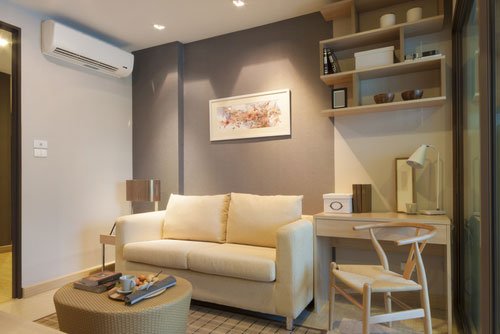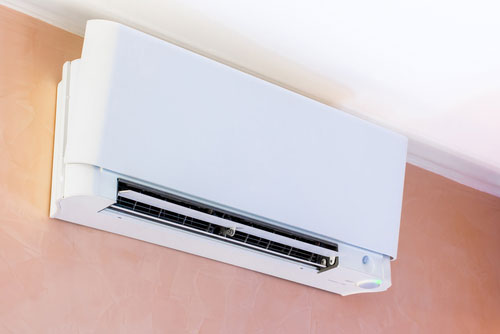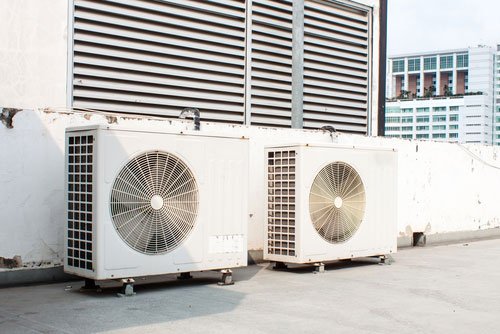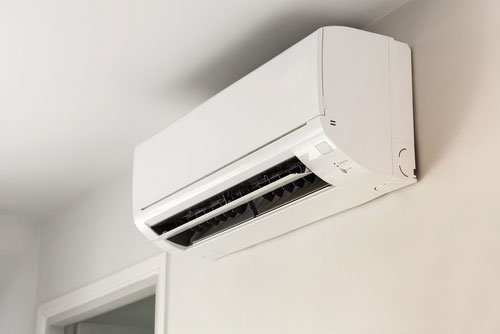efficient heating and cooling systems
Never set the thermostat at a temperature below what you require – that does not make the unit cool faster. A light roof or reflective foil (see Insulation) under the roofing dramatically reduces heat gain, so ventilation systems are more likely to make a noticeable difference.
The roof should have reflective foil insulation installed and be vented to dispel hot air.
They work by extracting hot air from the roof space and replacing it with ambient air, to minimise heat transfer to the ceiling space below.
The temperature in the roof cavity is significantly reduced only by a very large air flow, well beyond the capacity of most fans and vents. At this point, it’s important to decide the type of system and the capacity that would be ideal for use.

Air-Conditioning model zx7 
furnace repair las vegas 
air conditioning and heating repair
With that being said, you must expect that it is more expensive to install because of the rather extensive excavation that is required for this specific type of pump.
The GeoExchange system inside the home uses a heat pump to concentrate the earth’s thermal energy and then to transfer it to air circulated through standard ductwork to fill the interior space with warmth.
The effectiveness of removing hot air from the roof space is very sensitive to roof colour and presence of reflective foil under the roofing.
Ensure that ducts are well insulated and consider installing reflective foil or painting the roof a light colour and ventilating it to reduce the roof space temperature.
A dark (or unpainted steel) roof absorbs an enormous amount of heat.
They can save money with a heat pump during most of the day, and only use the old heating system to handle peak loads as an auxiliary or backup system. However, their main benefit is that they can continue to operate efficiently in extremely hot or cold conditions, where peak capacity and efficiency of air-to-air units can be significantly affected.

air conditioning technicians 
hvac services 24 
California Heating & Air Conditioning
They are expensive to install and so are more suitable for housing in extremely hot or cold conditions and with large heating and/or cooling loads, e.g. multi-housing developments.
Reverse cycle models can also be used for heating and can provide low cost, low emission heating (see ‘Heating’ above). If you see water coming from this overflow pipe, there is a problem.
The heat pump itself concentrates the absorbed heat, generating either hot water or hot air, and a heat dispersion system distributes the hot water or air for use in heating the home.
Avoid leaving air conditioning running when no-one is home.
Heating, ventilation and air conditioning are some of the largest consumers of energy in modern households.
They are suitable for single rooms up to about 50m2 but are generally less efficient than fixed split systems.
- What To Put In A Family Bug Out Bag For Disaster Preparedness
- Four Advantages Learning Techniques To Construct Solar Panel Systems
- How To Build Solar PV Panels
- Four Advantages Learning Techniques To Construct Solar Panel Systems
- Silicon In The Modern Era solar panel system
For ducted systems, install a zoning system so only rooms requiring air conditioning are cooled.
It is the interplay between these systems, combined with the size, age, physical features and location of your home, and even your lifestyle, that combine to produce the total energy efficiency of your home.
To achieve the maximum in total home comfort and energy savings, we recommend that you step back and look at the big picture of energy consumption in your villa. The fact is, your total home comfort and efficiency is the product of many systems: heating, cooling, lighting & electrical, plumbing and possibly others working together.
These ductless conditioners, on the other hand, are easy to install are easier to install and depending on the number of indoor or outdoor units you need, they can be ready to start working in a day.
Geothermal systems are highly efficient, producing up to four units of heat output for each unit of electricity input, a performance comparable to the most efficient conventional air conditioners.
Geothermal systems are highly efficient, even in extremely hot or cold conditions, and can run hot water services.
Heat exchange pipes are run through a body of water or deep into the ground where the temperature is relatively stable all year round. Geothermal heating and cooling systems are some of the most efficient ways to keep your dwelling at a comfortable temperature year round. They dissipate heat extracted from the room to the outside when cooling or from the outside air into the room when heating.
The advantage of a system using grid electricity to power the fan is that night-time cooling can flush heat out of the building overnight.
A qualified and licensed contractor should know and comply with local building codes and with manufacturer’s instructions.
However, for some, it’s hard to know what exactly your options are to reduce or limit your carbon footprint and impact on the earth.
Fixed split systems, especially those using inverter technology, are generally the most efficient domestic air conditioners.





